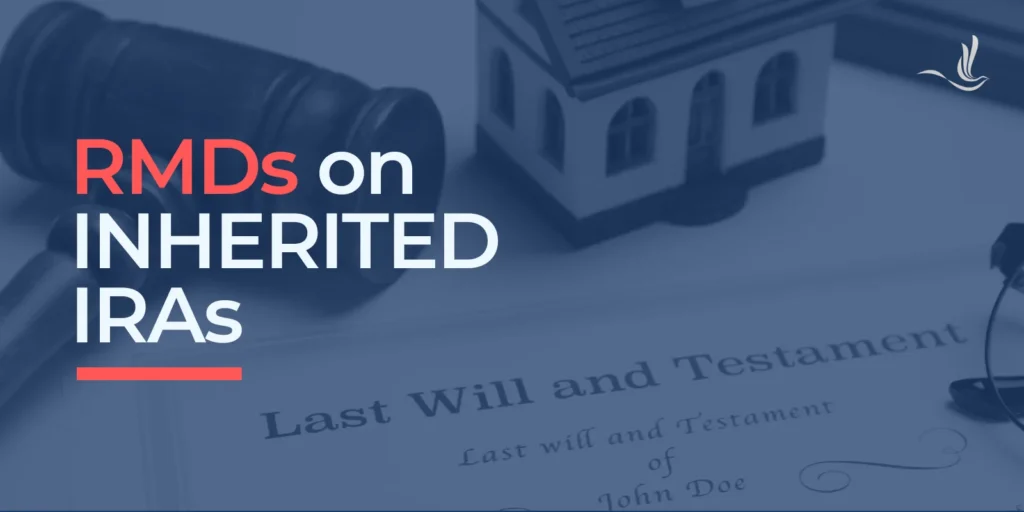
Inheriting a retirement account can be a significant financial event. However, it also comes with specific responsibilities, including the need to navigate the rules surrounding Required Minimum Distributions (RMDs). These mandatory withdrawals ensure that taxes are eventually paid on the funds accumulated in tax-advantaged accounts. Understanding how RMDs apply to inherited IRAs is essential for beneficiaries to manage their new assets effectively, comply with IRS regulations, and optimize their financial outcomes. This article explains RMDs on inherited IRs, highlighting the rules, calculations, tax implications, and strategies.
What are RMDs?
Required Minimum Distributions are mandatory withdrawals that must be taken from certain retirement accounts when an account holder reaches a specific age. These accounts include traditional IRAs, 401(k)s, 403(b)s, and other similar retirement plans. RMDs ensure that individuals do not defer taxation indefinitely on their retirement savings.
Inheriting a Retirement Account
When an individual inherits an IRA, the rules surrounding RMDs become particularly significant. The treatment of RMDs from an inherited account varies depending on several factors, including the type of account, the relationship of the beneficiary to the deceased, and the date of the account holder’s death.
Spousal Beneficiaries
Spousal beneficiaries have several options if they inherited an IRA before their spouse’s RMD date.
Rollover Option
If a surviving spouse is the sole beneficiary of an IRA, they can roll over the inherited account into their own IRA. This allows them to defer RMDs until they reach the age of 73 (or 72 if they reached that age before January 1, 2023). The money in the account will be available at any time. However, early withdrawal penalties will apply if you withdraw before age 59 ½.
Inherited IRA: Life Expectancy Method
Alternatively, the spouse can treat the account as an inherited IRA. In this case, RMDs will be calculated based on the surviving spouse’s life expectancy. Life expectancy can be calculated using the IRS’s Life Expectancy Table on their website. In this case, RMDs must be taken in the year the decedent would’ve reached age 73 or by December 31 of the year after the decedent’s passing.
Inherited IRA: 10-Year Method
Another option is for the spouse to treat the account as an inherited IRA but withdraw the balance over 10 years instead of their life expectancy. The inherited money will be available until December 31 of year 10 after the year the account holder dies.
Lump Sum Distribution
Finally, the spousal beneficiary can take a lump sum distribution. Income taxes will be paid all at once if the account is a Traditional IRA, which can move you into a higher tax bracket. Roth IRA distributions are tax-free, unless the account is less than five years old at the time of the account holder’s death.
Note that if the spousal beneficiary inherits an IRA after their spouse’s RMD date, their options are mostly the same. However, the 10-year option will no longer be available.
Calculating RMDs
The calculation of RMDs for inherited IRAs involves several steps.
- Determine the Account Balance: Use the account balance as of December 31 of the previous year.
- Life Expectancy Factor: Find the appropriate life expectancy factor from the IRS Single Life Expectancy Table or the Uniform Lifetime Table, depending on the beneficiary’s circumstances. These are provided on the IRS website.
- Divide the Account Balance: Divide the account balance by the life expectancy factor to determine the RMD amount.
Tax Implications
RMDs from inherited IRAs are generally taxed as ordinary income. This means the beneficiary will owe income tax on the amount withdrawn. However, if the account is a Roth IRA, RMDs are typically tax-free, provided the account has been open for at least five years.
Strategies for Managing RMDs
Beneficiaries can use several strategies to manage the tax implications and timing of RMDs. One example is spreading withdrawals. Instead of taking large distributions, beneficiaries can spread withdrawals over several years to potentially reduce their tax burden. Another is to make charitable contributions. Qualified charitable distributions (QCDs) allow beneficiaries to donate up to $100,000 directly from an inherited IRA to a qualified charity, potentially reducing taxable income. Finally, you can consult a financial advisor. Given the complexity of RMD rules, consulting with a financial advisor or tax professional can help beneficiaries navigate their options and optimize their financial outcomes.
Tax Help for Those Who Inherited an IRA
Understanding RMDs on inherited IRAs is crucial for beneficiaries to comply with IRS regulations and manage their inherited assets effectively. The rules can be complex, and they vary based on the beneficiary’s relationship to the deceased and the type of account inherited. By staying informed and seeking professional advice, beneficiaries can make the most of their inheritance while minimizing tax liabilities. Optima Tax Relief has over a decade of experience helping taxpayers with tough tax situations.
If You Need Tax Help, Contact Us Today for a Free Consultation